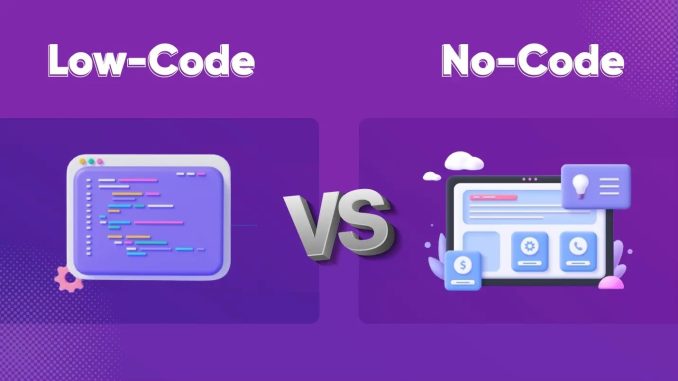
In today’s rapidly evolving digital landscape, the question of whether to build software or applications using traditional coding methods or no-code platforms is more relevant than ever. Entrepreneurs, business leaders, and even hobbyists face this crossroads as they look to bring their ideas to life efficiently and effectively. Understanding the differences between code and no-code, along with the strengths and limitations of each approach, can help you determine which path aligns best with your goals, skills, and resources.
At its core, coding involves writing detailed instructions in programming languages such as JavaScript, Python, or Ruby. This process requires technical knowledge and an understanding of software development principles. Coding offers unparalleled flexibility and control, allowing developers to build complex, custom solutions tailored precisely to specific requirements. For instance, a tech startup might develop a unique algorithm to analyze customer data or design a proprietary user interface that stands out in a competitive market. The freedom that coding provides enables innovation at a granular level, with the ability to optimize performance, security, and scalability according to the project’s needs.
On the other hand, no-code platforms have emerged as a game-changer for individuals and businesses that want to build applications quickly without writing a single line of code. These tools use visual interfaces, drag-and-drop components, and pre-built templates to simplify the development process. For example, entrepreneurs can launch e-commerce stores, create internal management tools, or design simple websites in a fraction of the time it takes traditional developers. The appeal of no-code lies in its accessibility; it empowers those who may not have technical backgrounds to participate actively in digital creation. By removing the barriers of coding complexity, no-code platforms democratize innovation and reduce dependence on specialized developers.
Choosing between code and no-code ultimately depends on the project’s complexity, timeline, budget, and long-term vision. If your project demands sophisticated features, deep integrations, or specific performance optimizations, traditional coding may be the better fit. Custom software development allows teams to build solutions that grow with the business and adapt to evolving challenges. For example, large enterprises often rely on code-based applications to handle complex workflows, high volumes of data, and stringent security requirements. These solutions can be continuously refined and enhanced by skilled developers who understand the underlying architecture.
Conversely, if speed to market is a priority and the functionality required is relatively straightforward, no-code platforms offer a compelling advantage. Startups or small businesses looking to validate ideas or streamline operations can benefit immensely from no-code’s rapid prototyping capabilities. It allows teams to test concepts, gather user feedback, and iterate quickly without a heavy investment in development resources. A marketing team might use a no-code tool to launch a campaign landing page or automate routine tasks, freeing up time to focus on strategy rather than coding details.
However, no-code is not without its limitations. While these platforms are powerful, they often come with constraints in customization and scalability. As businesses grow, their needs may outpace what no-code tools can support, potentially requiring a migration to custom-coded solutions. Additionally, relying heavily on third-party no-code services introduces dependencies that can affect data ownership, security, and integration capabilities. It’s important for decision-makers to weigh these factors when considering a no-code approach, especially if the project aims for long-term sustainability.
An increasingly popular approach is a hybrid strategy that leverages both code and no-code tools. This can mean using no-code platforms to handle front-end design and rapid experimentation, while relying on custom code for backend systems and complex functionalities. Such a combination offers the best of both worlds: speed and flexibility. For instance, a SaaS company might use no-code to build user-facing dashboards quickly while maintaining a robust, code-based backend that handles critical processes and data management. This synergy can accelerate development cycles without sacrificing the ability to scale and customize.
From a practical standpoint, your team’s skill set plays a crucial role in deciding between code and no-code. Organizations with strong developer resources may prefer coding to fully harness their technical capabilities. Meanwhile, teams without in-house developers or with limited budgets can benefit from no-code solutions that reduce the need for external contractors and speed up delivery. Training and upskilling are also considerations—investing in developer education enables complex coding projects, whereas no-code adoption often involves shorter learning curves and immediate productivity gains.
Ultimately, the decision between code and no-code comes down to aligning your project’s needs with available resources and strategic goals. There is no one-size-fits-all answer; rather, it is about choosing the right tool for the right job. Whether you opt for the precision and depth of traditional coding or the agility and accessibility of no-code, understanding these approaches helps you make informed choices that set your project on a successful path.
In today’s business environment, embracing digital tools effectively can be a defining factor in staying competitive and innovative. Code and no-code each offer distinct advantages, and savvy decision-makers recognize when to harness one, the other, or both. By thoughtfully considering the scope, timeline, and scale of your project, you can confidently navigate the evolving world of software development and bring your ideas to life in the most effective way possible.